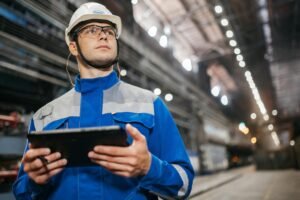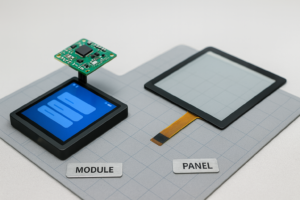Industrial displays vs regular displays is a common comparison for businesses selecting the right monitor for their needs. While regular displays work well in homes and offices, industrial displays are purpose-built for more demanding environments. From extreme temperatures to dust, water, and vibration, industrial displays stand out for their durability and reliability.
What Are Industrial Displays?
Industrial displays are monitors designed to operate in harsh conditions where standard displays would fail. They are typically used in factories, transportation systems, outdoor environments, and medical or energy sectors. These displays come with features like rugged housings, extended temperature ranges, and enhanced protection from dust and moisture.
Key Differences Between Industrial and Regular Displays
1. Durability
Industrial monitors are engineered for high-impact and high-vibration environments. Unlike regular monitors, they can handle extreme stress and last longer under constant use. This makes them ideal for manufacturing plants, logistics centers, and construction sites.
2. Wider Temperature Range
Most regular displays function best at room temperature. Industrial displays, on the other hand, operate flawlessly in freezing cold or intense heat. This allows them to be used in outdoor kiosks, cold storage, or hot factory floors.
3. Vibration and Shock Resistance
In industrial environments, vibrations from heavy machinery can disrupt regular displays. Industrial displays come with shock-absorbent casings and components that ensure stable performance even under constant vibration.
4. Dust and Water Protection
Thanks to high IP (Ingress Protection) ratings, many industrial monitors are waterproof and dustproof. They resist moisture, grease, and dirt, which makes them suitable for food processing plants, automotive factories, and outdoor applications.
5. High Brightness and Contrast
Industrial displays often offer high brightness levels and contrast ratios. This improves visibility in bright sunlight or dimly lit environments, ensuring the display is always readable.
6. Continuous Operation
Designed to run 24/7, these displays don’t overheat or degrade quickly. Regular displays are not built for prolonged use, which could lead to screen burn-in or component failure.
7. Backlight and Color Precision
Many industrial displays use LED backlighting and support wide color gamuts. This makes them perfect for detailed visual monitoring, such as medical imaging or process visualization.
8. Customizability
Industrial displays are often modular and customizable. Whether it’s specific interface ports, panel mount design, or touch screen integration, these displays can be tailored to fit unique project requirements.
Applications of Industrial Displays
Industrial Automation
Used in HMI systems, PLC control panels, and SCADA terminals to visualize real-time data and control processes.
Intelligent Transportation Systems
Deployed in public transit stations and highway systems for traffic updates, ticketing, and travel information.
Energy and Utility Monitoring
Installed in substations, solar farms, and power plants for performance visualization and fault detection.
Environmental Monitoring
Monitor air quality, temperature, and emissions in smart cities and green energy initiatives.
Medical Equipment
Provide clear and precise imaging for diagnostic devices, patient monitoring systems, and surgical tools.
Transportation and Logistics
Support logistics hubs and vehicle fleets with tracking data, digital signage, and route management.
Other Industrial Uses
Also found in sectors like mining, military defense, oil & gas, and factory automation.
Final Thoughts
When choosing between industrial displays vs regular displays, the decision ultimately depends on the environment and reliability needed. Industrial monitors offer superior performance, longer lifespan, and customization options that are crucial for demanding applications. Whether you operate in manufacturing, healthcare, or transportation, investing in an industrial display ensures uninterrupted performance and long-term value.
.png)



